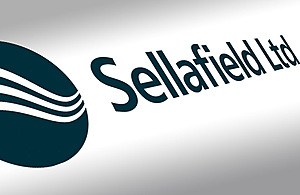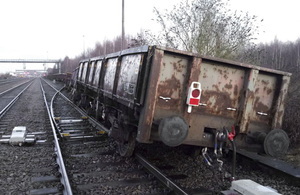- Government launches consultation on design of new oil and gas climate compatibility checkpoint
- the checkpoint will apply to any future oil and gas licences to ensure they are aligned with government’s climate change commitments
- new measure will support the UK’s oil and gas sector in the transition to net zero
The UK government has today (20 December) launched a consultation on the design of a new climate compatibility checkpoint for the oil and gas industry.
This follows a commitment earlier this year to introduce the checkpoint as part of the North Sea Transition Deal. This landmark deal between industry and government is supporting the UK’s oil and gas sector in the transition to a lower carbon future. An orderly transition is crucial to maintaining the security of the UK’s energy supply, supporting high-value jobs, and safeguarding the expertise necessary to achieve a lower carbon future.
The checkpoint will be a new measure carried out before each future oil and gas licensing process to ensure any new licences are only awarded on the basis that they are aligned with the UK’s climate change commitments, including the UK’s target of reaching net zero by 2050.
The consultation, now open for views, sets out potential tests that could be used to assess new licenses, including domestic demand for oil and gas, the sector’s projected production levels, the increasing prevalence of clean technologies such as carbon capture and hydrogen generation, and the sector’s continued progress against emissions reduction targets.
Energy and Climate Change Minister Greg Hands said:
This new checkpoint will be key to our plans to support the oil and gas sector during its net zero transition. It helps safeguard the future of this vital UK industry as we create more opportunities for green jobs and investment across the country.
UK government Minister for Scotland Malcolm Offord said:
The UK government fully supports the oil and gas industry in its transition away from fossil fuels to cleaner, greener energy sources, such as wind and tidal power.
Until we have sufficient supply in those areas, maintaining a domestic supply of oil and gas – albeit reduced – will be necessary.
We are working closely with the industry on the North Sea Transition Deal, and we are consulting to ensure this addresses climate concerns while protecting and creating jobs.
It will all help us accelerate towards a fully green energy sector in line with the Prime Minister’s 10 point plan and our robust 2050 net zero goals.
Andy Samuel, Chief Executive of the Oil and Gas Authority (OGA) said:
We welcome the launch of this consultation. Alongside the net zero test the OGA is applying to our decisions such as field developments, these proposals recognise the important role of industry in helping meet the UK’s energy needs while accelerating the energy transition to net zero.
The consultation launched today will give interested parties, including oil and gas industry stakeholders, the opportunity to input on the design of the new climate compatibility checkpoint. Respondents are invited to give their views on the proposed principles, structure, and content of the checkpoint.
Using the feedback given from this consultation, the checkpoint will then be established as a new measure to assess potential future licences. This checkpoint will ensure any future licences are granted only on the basis that they are compatible with the UK’s climate change objectives. If the evidence suggests that a future licensing round would undermine the UK’s climate goals or ability to reach net zero, it will not go ahead.
The new checkpoint will be an additional layer of scrutiny applied to future licences, on top of the existing measures that already apply to UK oil and gas developments, including the environmental assessment carried out by the Offshore Petroleum Regulator for Environment and Decommission (OPRED), and the net zero impact assessment carried out by the Oil and Gas Authority as part of its consent process for new licences.
As world leaders in the global effort to tackle climate change, the UK is driving the global shift away from fossil fuels. However, we recognise the important role that oil and gas will play over the coming decades as the UK transitions to low carbon solutions, and the Climate Change Committee acknowledges that the transition to non-fossil forms of energy cannot happen overnight. This checkpoint will enable oil and gas to provide important security for the UK’s energy mix, and to be used for the production of many everyday essentials like medicines, plastics, cosmetics and household appliances, whilst minimising emissions.
Through the landmark North Sea Transition Deal, the UK was the first G7 country to set out plans to back the oil and gas industry to transform while supporting tens of thousands of jobs. This checkpoint is a key example of how the government is supporting the industry in the transition to a lower carbon future, while also working to achieve the UK’s net zero commitment.
- In September 2020, the then Secretary of State for Business, Energy and Industrial Strategy asked officials to conduct a review into the licensing of oil and gas in the UK. The main question of this review was whether the continued award of new licences for oil and gas exploration is consistent with the UK’s wider climate objectives, including net zero
- the review concluded that continued licensing for oil and gas is in principle compatible with the UK’s climate objectives, but recommended that a formal climate compatibility checkpoint, building on current practice, should be established, to ensure that the compatibility of future licensing with the UK’s climate objectives is always evaluated before a licensing round is offered
- interested parties can submit their views on the consultation
- the consultation is open until 28 February 2022. After the consultation period has concluded, the government will consider the responses received, and announce the outcome of the final checkpoint design in due course
- responses from all interested parties are encouraged, although it is anticipated that the audience for this consultation will predominantly be industry stakeholders



